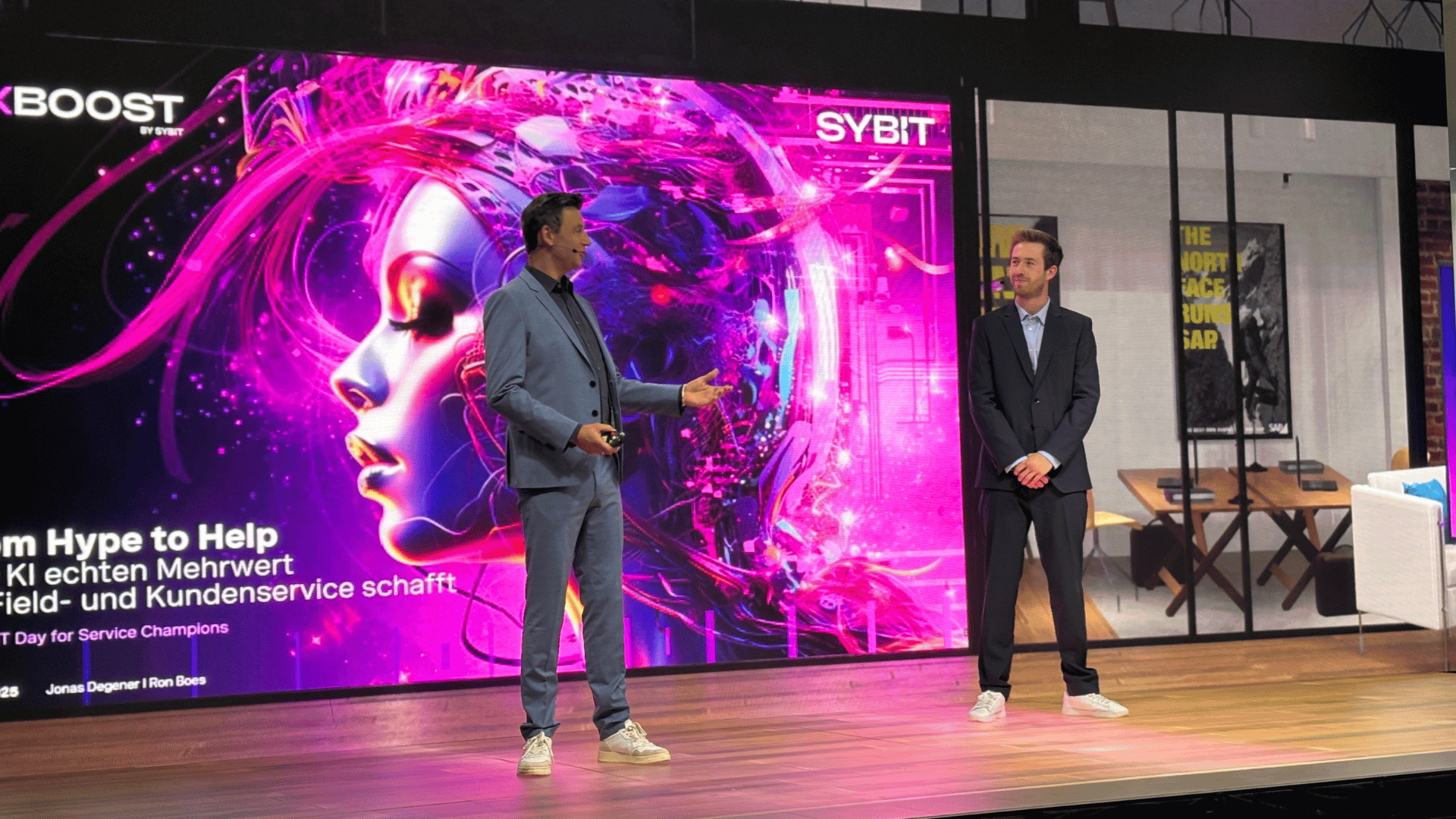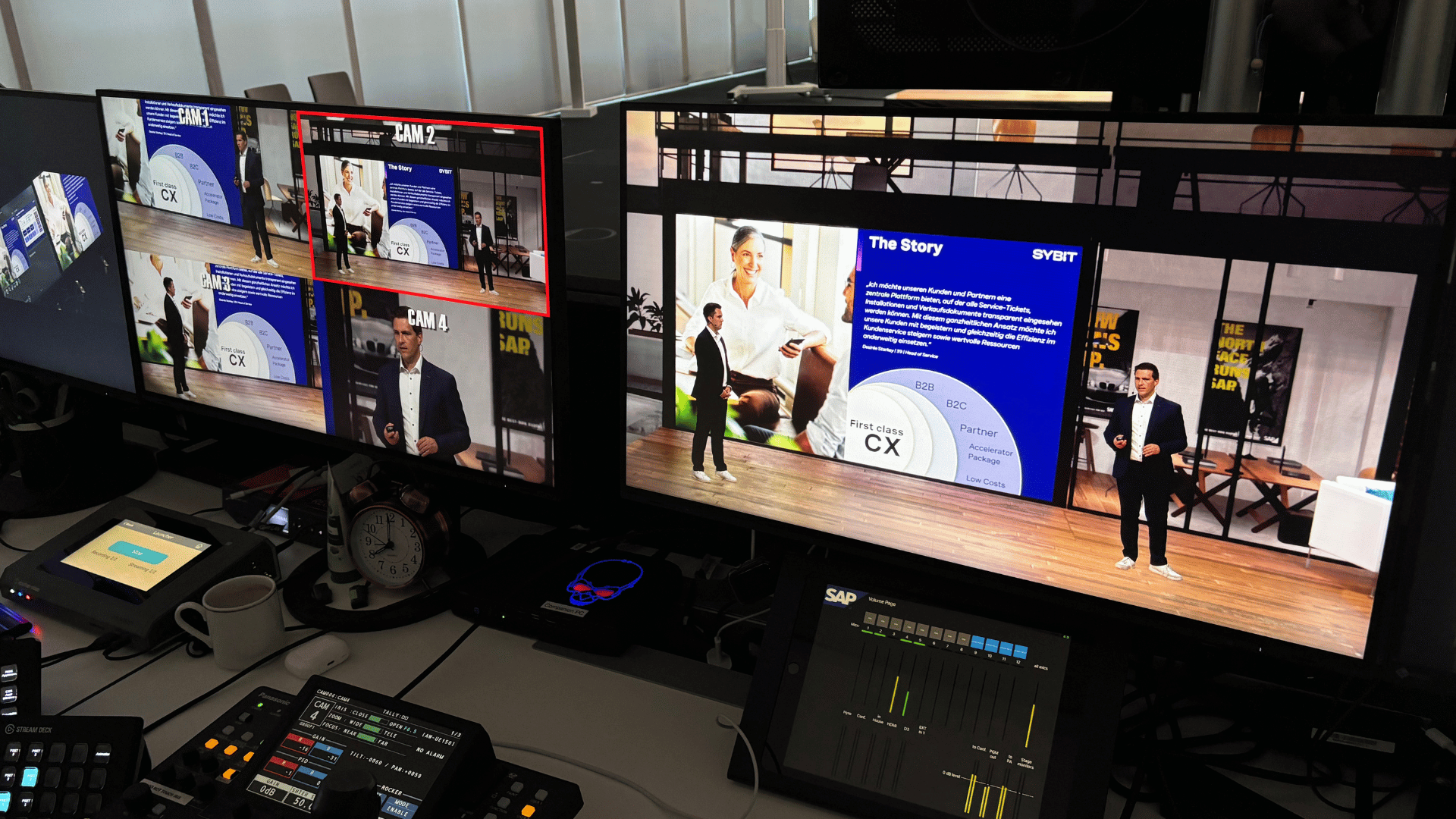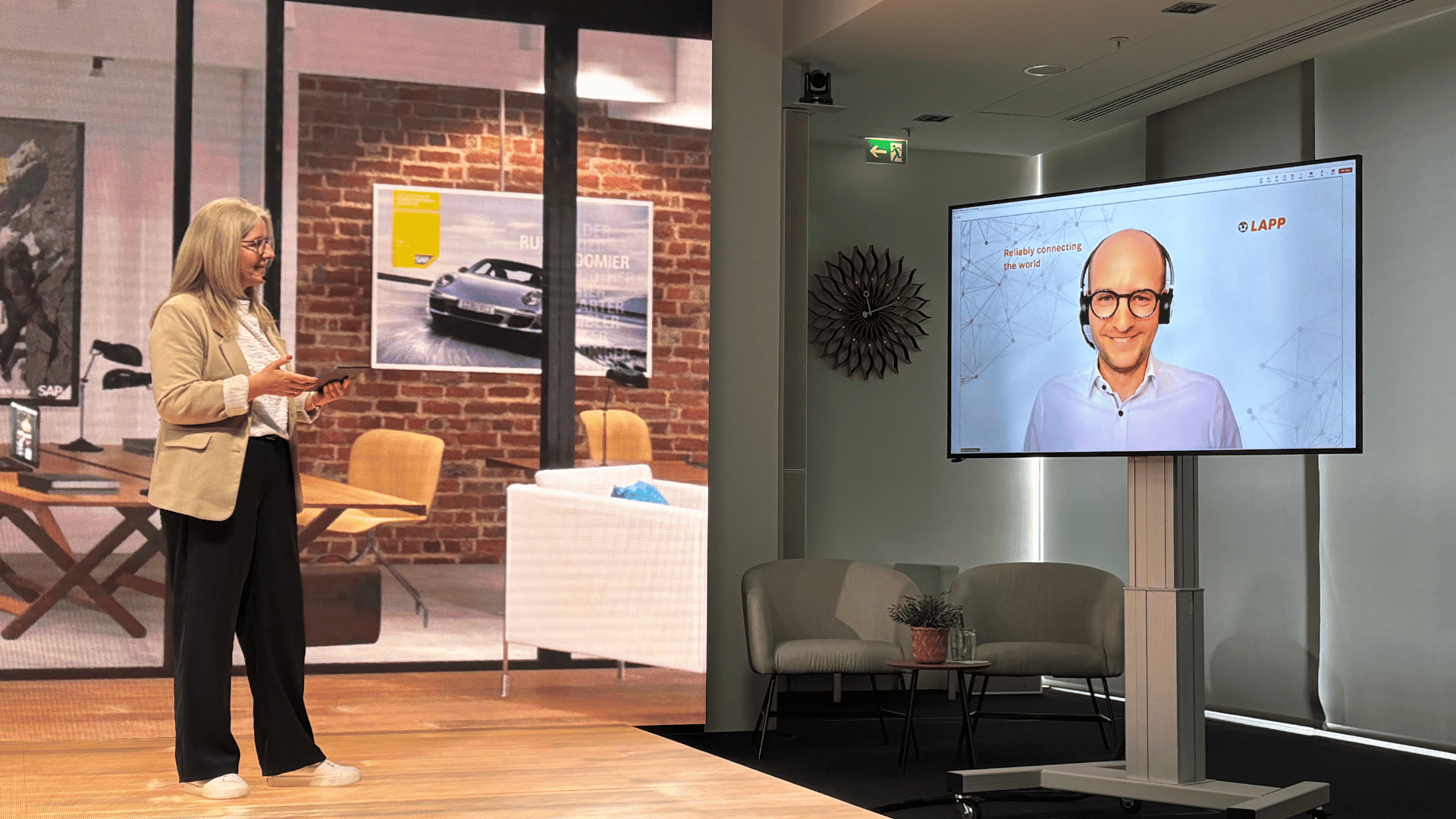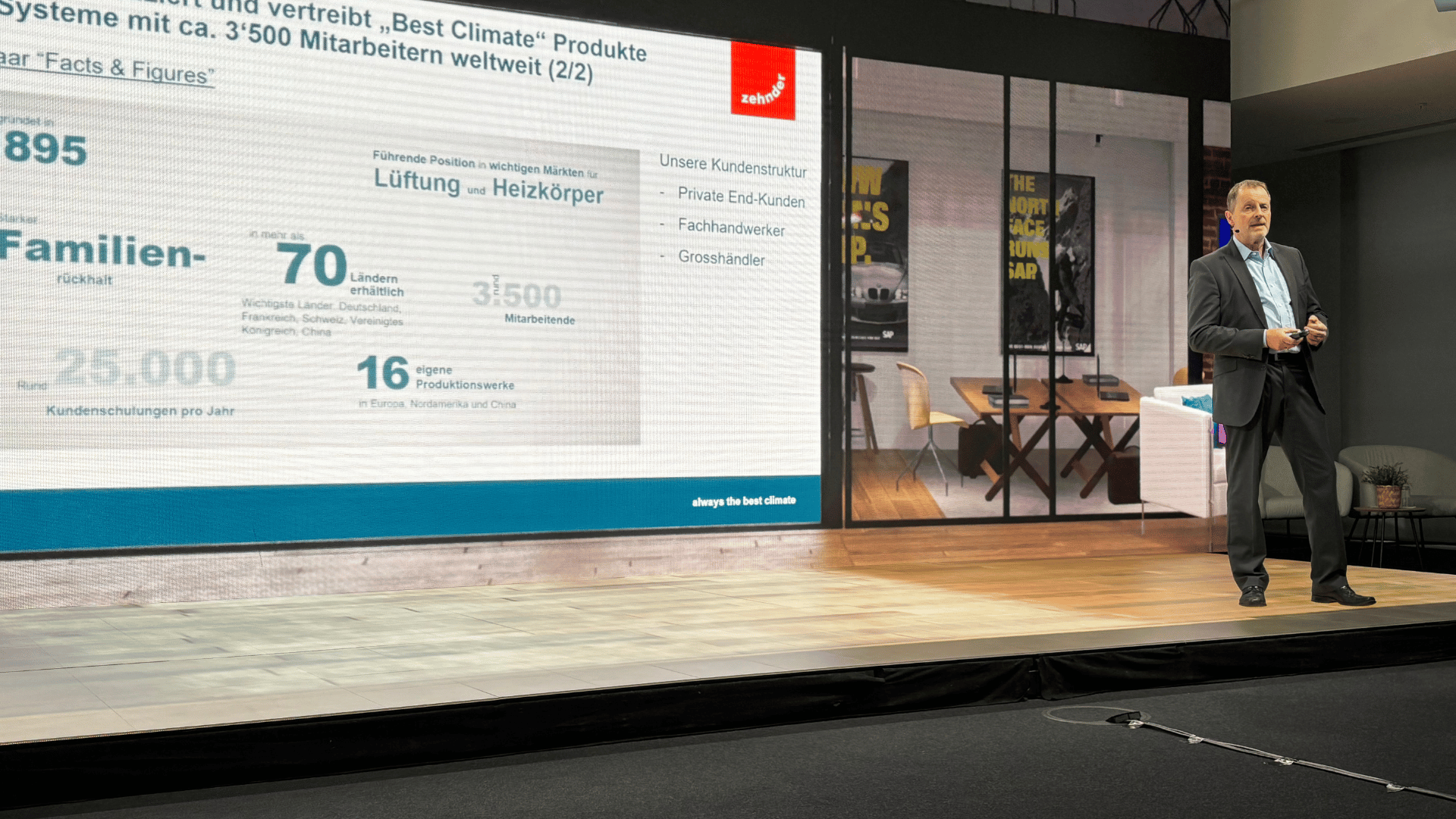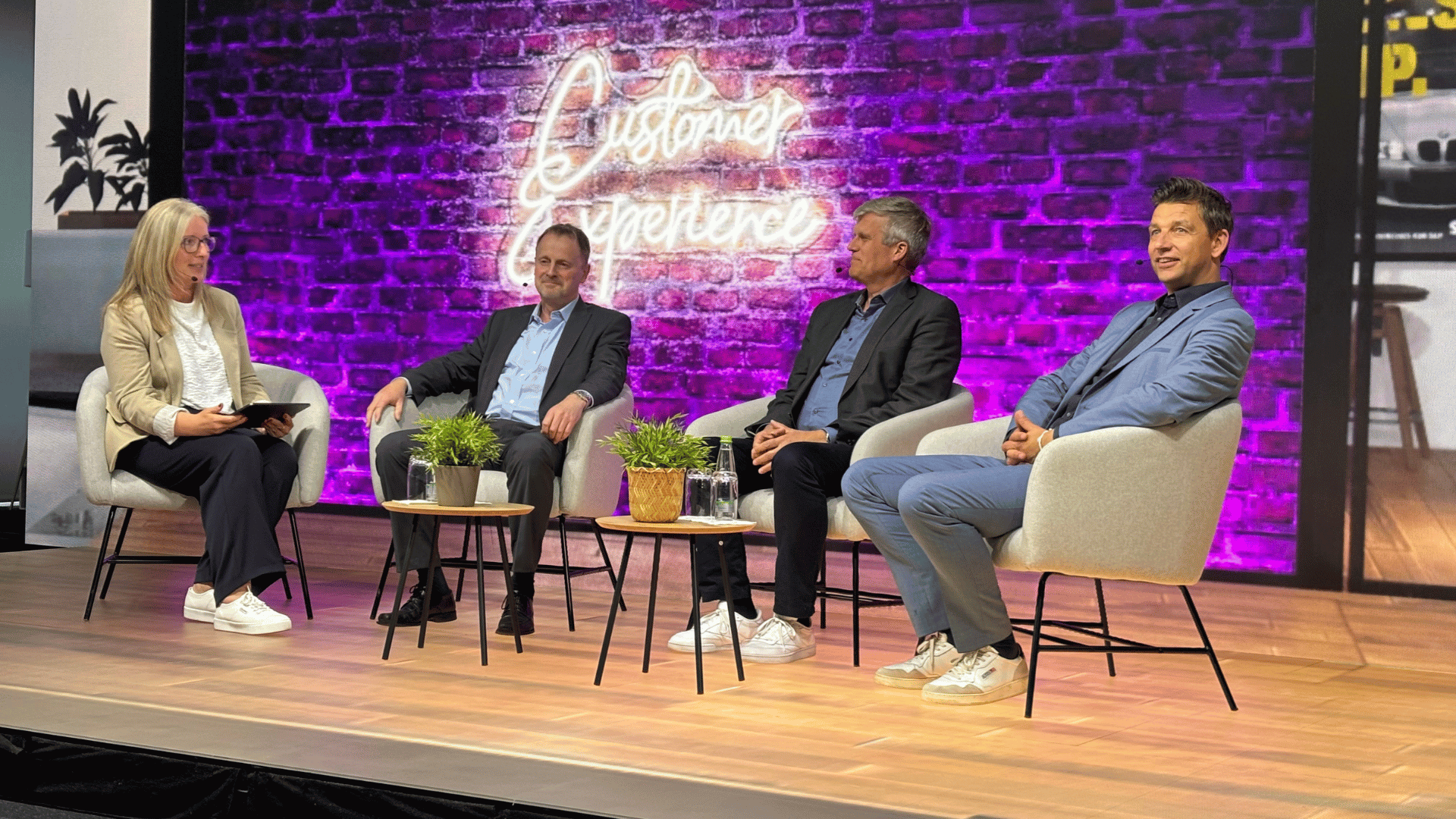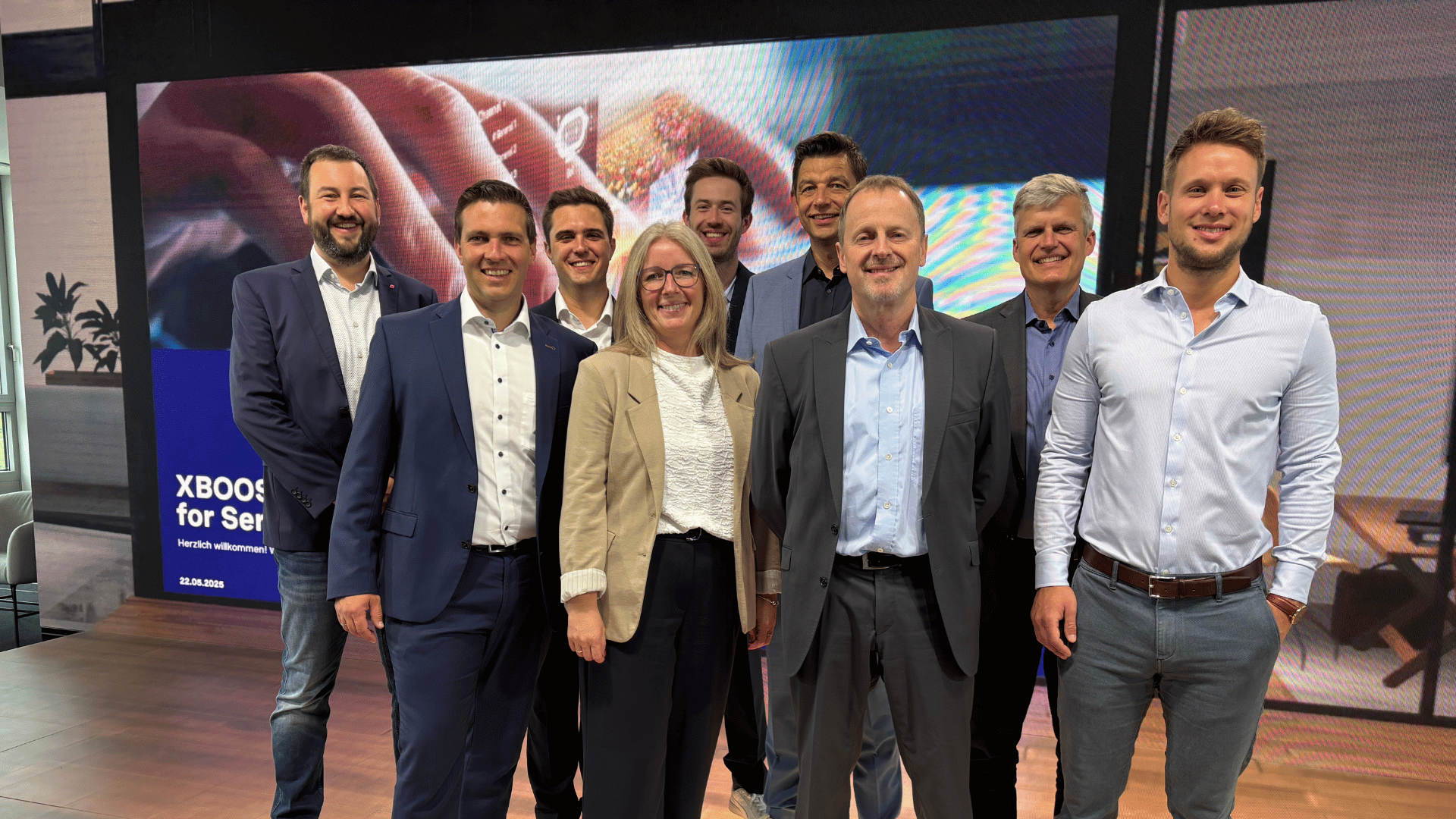The Common Thread: How Service Becomes a Strategic Success Factor
In the opening keynote, Fabian Huber (Head of Business Consulting, Sybit) laid the foundation for the day:
“A service organization is future-ready when it thinks end-to-end, integrates digital channels, and uses data to enable new business models.”
He introduced four guiding principles that ran through all other sessions:
- Think holistically – Service is not an isolated function but part of seamless customer processes.
- Establish customer portals as the core – They centralize transparency, automation, and personalization.
- Enable new business models – such as pay-per-use or subscriptions, supported by intelligent data usage.
- Develop IT, processes, and organization together – Service needs both a solid technical platform and strategic clarity.
Practical Insights: How Companies Are Driving Transformation
1. LAPP: From Email Chaos to Efficiency
Steffen Greiner showed how LAPP transitioned from unstructured email communication to clearly defined, automated ticket processes using SAP Service Cloud.
Key Learnings:
- No efficiency without transparency – centralized ticket platforms increase visibility, shorten response times, and improve service quality.
- Early involvement of key users and clear role definitions are critical to global rollout success.
2. Zehnder: Breaking Up Fragmented Processes – For Measurable Service Excellence
Harald Pfeifer reported on the implementation of SAP Service Cloud, SAP FSM, and a new customer portal.
Key Learnings:
- Successful service digitalization requires deep process harmonization—ideally before the project begins.
- Technical transformation must be accompanied by effective change management.
- Customer portals and self-service aren’t "add-ons"—they’re essential for scalability and customer satisfaction.
- Technology is a lever—not an end in itself.
3. AI in Service: From Hype to Help
Roland Boes and Jonas Degener gave a practical overview of AI applications—from intelligent routing to automated email classification.
Key Learnings:
- AI improves speed and quality—but only when use cases are clearly defined.
- AI should be adapted to the process—not the other way around: “Bring AI to the people—not the people to AI.”
4. SAP Service Cloud V2 – The Roadmap to Future-Readiness
Lars Frerking introduced new features such as automatic ticket summarization, translations, and Field Service Management functions.
Key Learnings:
- Migrating to Service Cloud V2 is more than a software upgrade—it’s a strategic modernization.
- Seamless CX processes require a clear migration design, business readiness, and realistic project planning.
- Tailored solutions can make all the difference.
5. Portals & FSM with SAP BTP – More Than Just a Toolbox
Thomas Winter and Mirko Pleli demonstrated how SAP BTP enables custom portal solutions tailored to business models, industries, and user needs.
Key Learnings:
- “Standard + Extension” is key: companies need flexibility without compromising stability.
- FSM processes can be accelerated through targeted custom extensions—such as integrated knowledge bases or automated dispatch planning.
Looking Ahead: The Expert Talk "Service 2030"
In the closing panel, representatives from SAP, Zehnder, and Sybit discussed what the future of service will look like.
Key Takeaways:
- Customer centricity remains the guiding star—technology is just the enabler.
- Integration, scalability, and automation are the three pillars of future-proof service architectures.
- Successful organizations rely on flexible teams, open platforms, and data-driven decisions.
Conclusion: From Fragmentation to Excellence – With Clear Strategy and Tangible Value
The XBOOST Day for Service Champions 2025 clearly showed:
To succeed in customer service, companies must align technology, processes, and organizational structure.
The strategies and real-world examples presented demonstrate how this can be achieved—from SAP Service Cloud to AI-driven processes and industry-specific portal strategies.
The core message of the event:
Customer service becomes a profitable, efficient, and customer-centric unit—when companies drive change strategically and consistently.
Pro tip: Use the strategies presented as a foundation for your own service roadmap. Our experts are happy to support you in turning fragmented processes into true service excellence.
